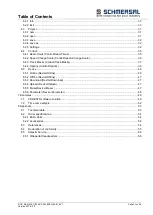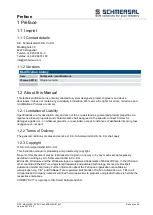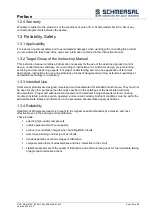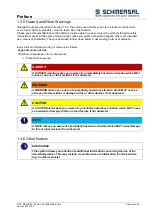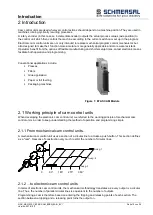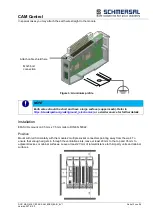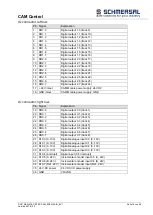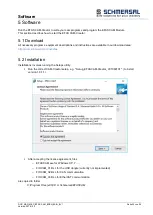
Introduction
DOC_MAN_MEC_EFAS-CAM_#SEN_#AIN_#V1
Seite 11 von 56
Version: 2018 / 02
2.1.3
Position detection
An incremental encoder picks up the current machine position.
Incremental encoders provide the angular momentum signals A and B.
Changes in position are identified by counting the momentum signals.
Checking the 180° offset of signals A and B allows you to establish the sense of rotation.
Since the absolute position is unknown when the system turns on, each incremental encoder needs to be
referenced. (Meaning that changes in position cannot recognised when the system is off.)
The absolute position is made known to the control unit by defining a home position which can be found
either by means of marker switches or by means of the incremental encoder's reference impulse (index).
2.1.4
Further benefits of electronics
A large number of cams with accurate trigger and release points can be programmed for every
output.
Once programmed, a cam can be easily changed or deleted.
If a new cam overlaps an existing one, both cams are joined to make up a single cam.
If a new cam is contained in a previous cam already, the new cam will be ignored.
Once programmed, a cam can be copied to other cam control units.
Physical dead times of actuators can be levelled out by the adjustable dead time compensation
feature.
Time cams enable the use of cams with constant times which solely depend on the triggering edge.
2.2
Programming
Programs can be created by various means, as appropriate. Use them to
create, test and optimise programs,
check them in online mode,
copy them within the same cam control unit,
copy them from one cam control unit to another,
save them.



